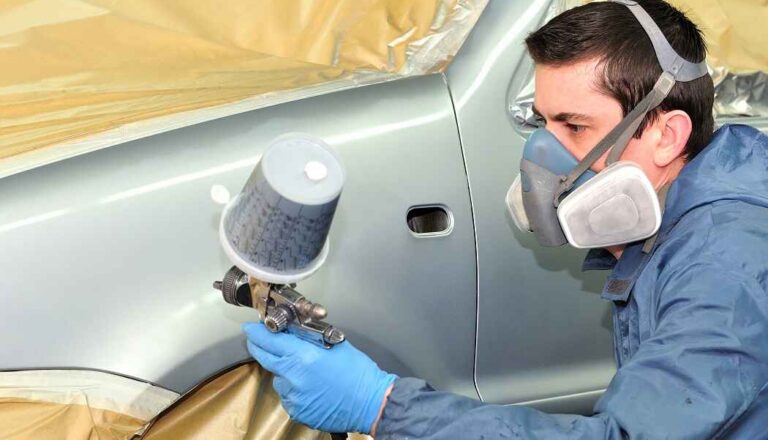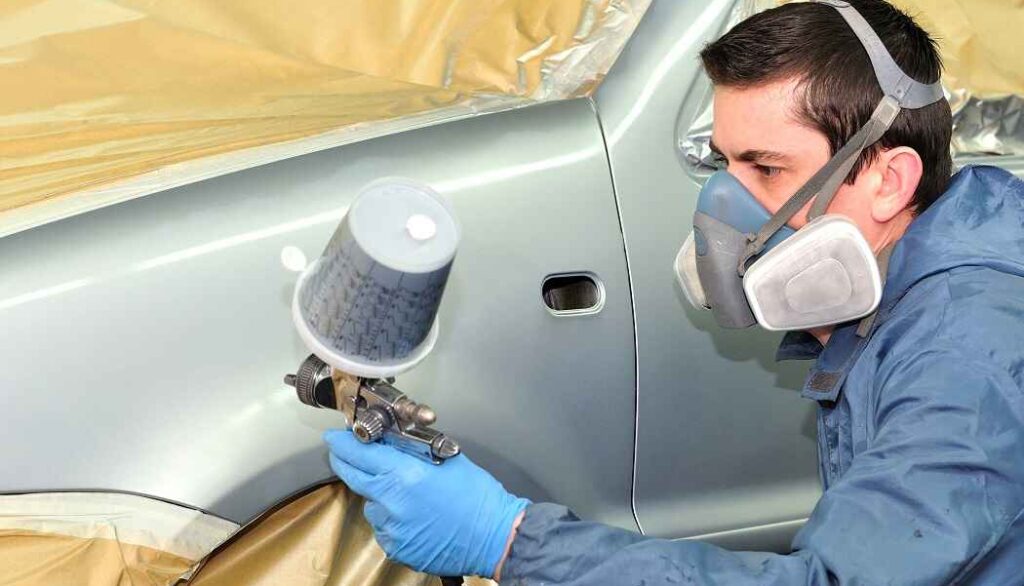
How to Get Rid of Tape Lines after Painting Car?
Are unsightly tape lines marring the flawless finish of your newly painted car? Don’t fret! We understand the frustration of spending hours meticulously painting your vehicle, only to be left with the telltale marks of tape lines.
Thankfully, there are effective techniques and tricks that can help you bid farewell to those unwanted tape lines and achieve a smooth, professional-looking paint job.

In this guide, we will walk you through the step-by-step process of getting rid of tape lines after painting your car. This will ensure that your vehicle looks as good as new.
What Are Tape Lines in Car Painting?
Tape lines in car painting refer to the visible marks left behind when automotive masking tape is removed after a paint job. These lines occur due to a contrast in paint texture and finish between the masked and unmasked areas.
When painting a car, tape is applied to protect certain sections, such as windows, trim, or panels. This keeps those parts safe from being coated with paint. While the tape effectively creates boundaries, it also creates a noticeable transition between the masked and painted areas.
These tape lines can be unattractive and detract from the overall appearance of the vehicle’s finish. Removing tape lines requires specific techniques to blend the paint seamlessly and achieve a uniform surface.
How to Get Rid of Tape Lines after Painting Car?
Getting rid of tape lines after painting a car requires a systematic approach. By following these step-by-step instructions, you can achieve a flawless finish and eliminate any visible tape lines.
The Necessary Supplies
- Microfiber towels
- Rubbing alcohol
- Fine-grit sandpaper (2000 or higher)
- Automotive polishing compound
- Water spray bottle
- Masking tape
Assess the Tape Lines
Carefully inspect the areas where tape lines are visible. Identify the extent and severity of the lines to determine the appropriate method for removal.
Clean the Affected Areas
Use rubbing alcohol on a microfiber towel to clean the tape lines and the surrounding painted surface. This step ensures that no dirt or debris residue interferes with the removal process.
Wet Sanding (If Necessary)
For more pronounced tape lines, wet sanding can help smoothen the transition. Soak the fine-grit sandpaper in water for a few minutes. Gently sand the tape lines using a circular motion. Be careful not to apply excessive pressure. Keep the surface wet and periodically rinse the sandpaper to prevent clogging. Once the lines begin to fade, stop sanding and clean the area.
Polish the Affected Areas
Apply a small amount of automotive polishing compound to a clean microfiber towel. Work the compound into the tape lines using gentle, circular motions. The polishing compound helps blend the paint and remove any remaining tape line marks. Continue polishing until the lines become less visible or disappear entirely.
Clean and Inspect
Wipe the polished areas with a clean microfiber towel to remove any residue. Inspect the surface under different lighting conditions to ensure the tape lines are no longer visible. If needed, repeat the polishing process until the lines are completely eliminated.
Final Touches
After removing the tape lines, apply a protective wax or sealant to the painted surface. This step enhances the shine and provides an additional layer of protection.
When Can I Remove Tape after Painting My Car?
After painting your car, it’s essential to remove the tape at the right time to ensure a clean and professional finish. The timing for tape removal depends on several factors.
Some paints may be dry to the touch within 6 to 8 hours; it is wise to wait longer for the paint to fully cure before removing tape. To provide a more accurate guideline, it is recommended to wait at least 24 to 48 hours before removing tape from a freshly painted car.
This allows sufficient time for the paint to dry, harden, and reach a more durable state. Waiting for this duration helps minimize the risk of damaging the paint job when removing the tape, as the paint will have had more time to fully cure. In this regard, you can follow some tips.
- Refer to the right instructions for recommended drying times.
- Lightly touch the painted surface in an ulterior area to check for dryness without tackiness or sticking.
- Take into account the ambient temperature and humidity, as they can affect drying time.
- Perform a test pull by slowly and carefully peeling back a small section of the tape to check for any paint lifting.
- If the paint is dry to the touch and shows no signs of damage during the test pull, it is safe to proceed with complete tape removal.
Tips to Ensure Straight and Smooth Tape Lines
If you’re taping off car’s sections for specific paint purposes, following a few key tips can help you ensure precision and consistency. Here they are –
Clean the surface: Make sure the surface where you plan to apply the tape is clean, dry, and free of any debris.
Use painter’s tape: Invest in good-quality painter’s tape that is specifically designed for clean lines. Cheaper tapes may not adhere as well or may leave behind residue.
Mark the desired line: Use a measuring tape or a ruler to mark the exact position of the line you want to create.
Apply the tape slowly: Start at one end of the marked line and slowly unroll the tape along the marked path. Apply light pressure with your fingers or a putty knife to ensure the tape adheres well.
Seal the tape edges: To prevent paint from bleeding under the tape, use a putty knife or a similar tool to press down the edges of the tape firmly.
Paint with care: When painting, avoid applying too much pressure near the taped edges. This can cause the paint to seep under the tape.
Final Words
We have explored here various tips that can effectively address this issue. The key to successfully eliminating tape lines lies in patience, precision, and practice. With the right techniques, combined with a meticulous approach, you can achieve a tape-line-free finish on your car.
Whether you decide to tackle this task yourself or seek professional assistance, the end result will be a flawlessly painted vehicle that you can be proud of.
